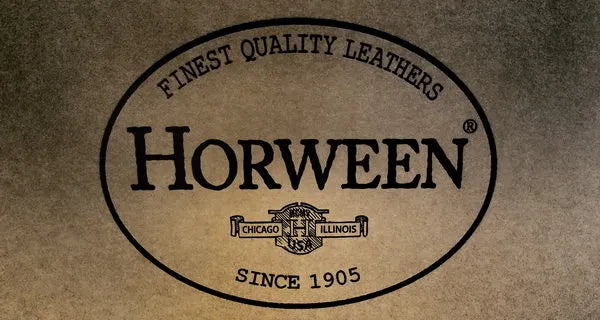
Horween Leather Company
Authenticity of materials and quality of workmanship are the foundation of every manufactured product. Leather craftsmen are particularly aware of the importance of what we call ‘Material’. It is a critical component to attracting attention: what people see, feel, and touch. These are the factors that people use to decide on the quality of a product. Materials can add positive feelings when using our products.
That's the way it happens, that due to the popularity of some product, company, person, concept, ... a proper noun becomes a common noun - an EPONYM. For example, all copy machines are called ‘Xerox’, not only the machines manufactured by Xerox, etc.
In conversations of not just regular people, but also leather goods admirers, you hear more and more the word "HORWEEN", which has been surrounded by myths for a long time and aspires to become a common noun.
Further, we will talk about a bright representative of the company with impeccable quality products, Horween Leather Company, a classic, family-owned leather company with an experience of more than 100 years and their production technologies.
At the moment, the head of the factory is a representative of the fifth generation of the founder - Nick Horween. It is he who supervises the working process of creating the famous cordovan and gives tours to everyone.
The Horween family moved from Ukraine to Chicago in 1893. The first years were spent getting used to the new culture and settling in, and in 1905 Isadore Horween opened his own tannery after working for 12 years at one of the numerous tanneries in Chicago.
The venture was a success. For over 107 years, the Horween name has become firmly associated with cordovan, although the company produces about a hundred other types of leather for various industries.
The Horween Leather Company boasts a whole list of major clients acquired over a century of efficient operation. For example, in the forties, Arnold Horween (Nick's grandfather) - concurrently a player and NFL coach - was able to sign a contract with Wilson to produce leather for NFL footballs.
Since then, Horween has been producing a special full-grain leather that, upon closer inspection, looks a lot like the skin of a Spalding basketball.
In one week, the factory processes raw materials from 4,000 head of cattle and about 1,000 horse hides into leather and creates more than 120,000 square feet of leather. The company's revenue is estimated at about $25 million per year.
The tanning process
It all starts with the raw leather. The leather comes salted (so that it doesn't get rotten during transportation). Next, the removal of hair begins. This is done with the help of chemicals that are loaded into a huge washing drum.
The skin is also put in there, where it is marinated for 24 hours. During this process, the skins are salted in order to reach a certain pH level.
Then comes the tanning process in a solution of tannin, also poured into large tanks.
After that, the leather is again stripped of any remaining hair, dried and pressed to the desired thickness, and finally dyed and (sometimes) polished with wax.
Contrary to popular belief, about 85% of the leather at Horween is made from cowhide.
In general, tanning and leather production is a fairly labor-intensive process that requires a high degree of training. This is why all Horween employees are tanners of at least the second generation.
They learn their skills not only from their fathers but also at the German leather school in Reutlingen (Germany).